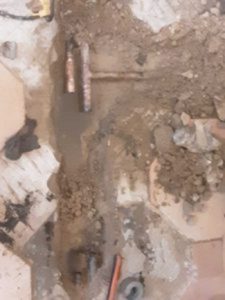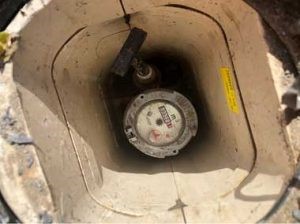How To Detect A Water Leak Under Concrete or Underfloor Heating Leaks

If a pipe leaks in your home, the signs are pretty clear: you will see puddles of water, notice a drop in pressure, or hear a mysterious dripping even when the taps appear to be off. Concealed leaks, on the other hand, can be far more difficult to identify and locate. In many cases, the first time you will notice that something is wrong is when you note an increase in water bills – and depending on how long the leak has gone unchecked, this can be a very unwanted surprise.
Leaks under concrete come with their own set of issues and sources of damage, including damage to foundations, sinkholes, and the risk of subsidence. Getting to the source of them as quickly as possible should be your primary aim, and we are here to help you achieve this as quickly and effectively as possible.
What Are The Risks Of A Leak Under Concrete?
If you suspect a leak beneath your concrete, you need to act fast to ensure that this is rectified as quickly as possible. Left untreated, there are a number of risks, including:
• Raised water bills – if water is flowing freely, you are almost literally giving away money in the form of raised water bills.
• Mold – if water leaks are allowed to run wild and untreated, there are severe health implications, including risks of rashes, itchy eyes, fevers, and serious respiratory illnesses including pneumonia and asthma
• Structural damage – leaks can result in damage to the structure, foundation and walls of your home, including creating weak spots that can cause subsidence and the risk of collapse
• Discount Other Sources
If you suspect a leak due to a rise in water bills, you should methodically work to discount all other sources and/or hire a professional Leak Detection Company. Check radiators, pipes, boilers, sinks, showers, baths, and toilets for signs of a leak – in some cases, these may be the culprit, and can be a fairly easy fix.
Look For Signs Of A Water Leak
If there is no sign of a leak in the obvious spots, the issue is likely to be under concrete. There could be visual indications of this, such as pools of damp on carpets or flooring – this may be a sign that the leak beneath the concrete has spread though closer to the surface, and needs to be addressed immediately.
There may also be other signs that there is an issue buried beneath the concrete; you may notice a sinkhole or abnormally damp patch close to the wall. The grass may grow in abundance over a path or passage, or you may notice water seeping up through the concrete – the porous nature of the material means that drips can make their way through. In some cases, you may also discover a cracked concrete slab – this can be the perfect chance for water to escape.

Check Your Water Meter
The next step is to check your water meter – this will tell you quickly if there is an issue. Some meters may come with a specific device to help determine a leak quickly; this may be a leak indicator (usually displayed as a small triangle or sailing wheel), a sweep hand – identified as a clock-like hand that covers the meter – or an odometer – a row of numbers. You can also check the valve itself to identify any changes. In most cases, the water meter will be located close to your home, usually on the street or kerbside, and will feature a covered lid at ground level.
Start by removing the lid and clearing away any debris or dirt, allowing you to see the water meter and valve clearly. Make a note of the position of the valve needle – you can also make a small mark to help you be super certain. Once this is done, shut off the water to your home for a minimum of 30 minutes. After this period, head back to the water meter, and take a note of the position of the valve – if it has moved, even with the water shut off and none being used inside the house – this is a pretty good indication of a leak somewhere in your external water supply between the water meter and your internal stopcock.
Depending on your system, you may also have another means of detecting an issue – the leak detector may not stop turning, or the odometer has its numbers increase continually, even when the water is turned off. In some cases, the sweep hand may also move around dramatically over the course of a number of minutes.
Call A Leak Detection Company
Here at ADI Pro Leak Detection we trace thousands of hidden water leaks each year, including many under concrete surfaces and even you think you have a water leak in your underfloor heating! Our acoustic listening devices are capable of hearing water escaping from a pipe up to 3 meters below the surface of concrete – pretty incredible. In conjunction with our harmless tracer gases we are able to pinpoint the location of a leak, internally or externally.

